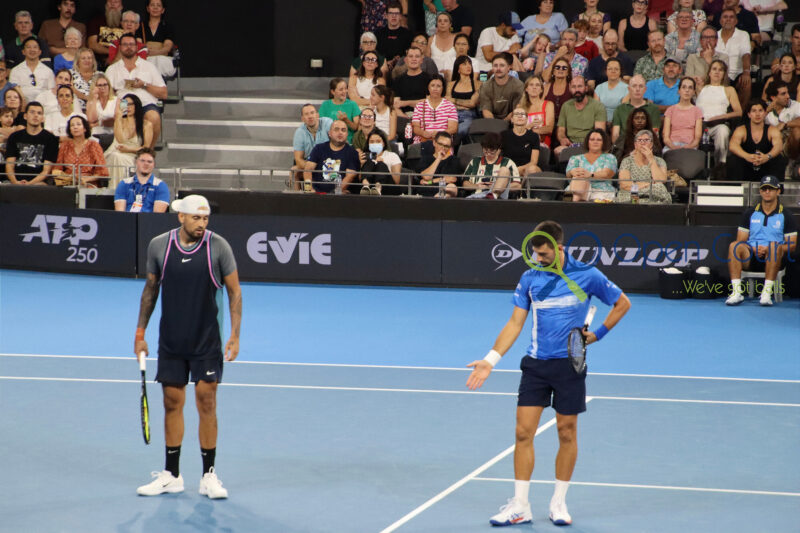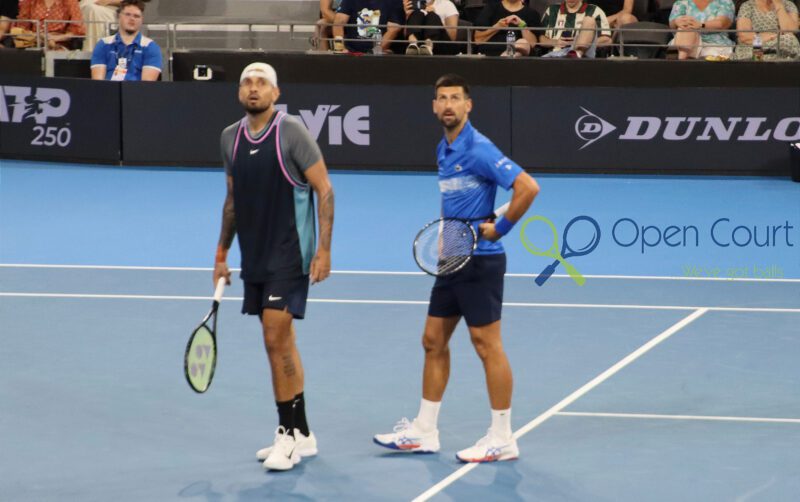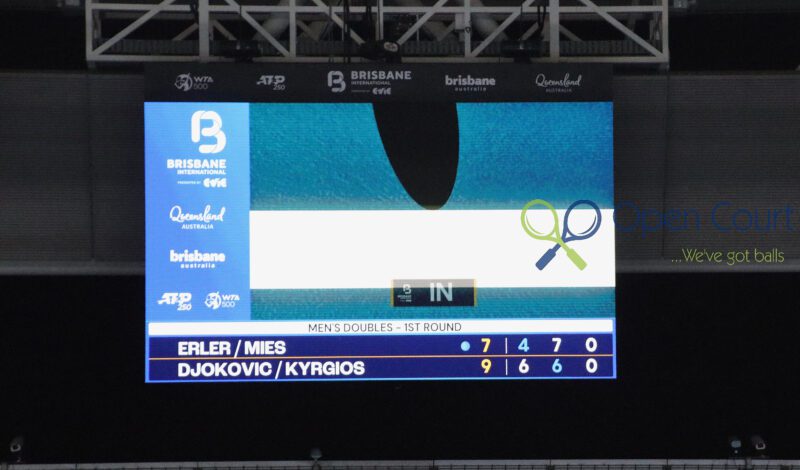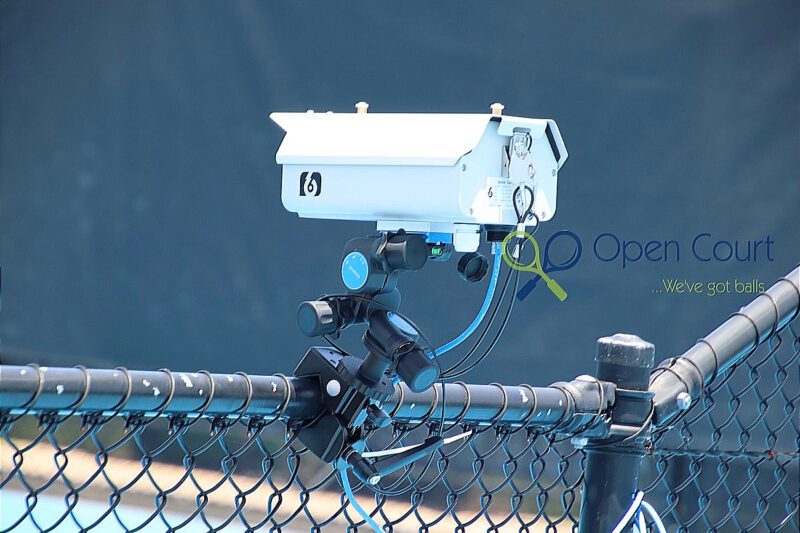
–
BRISBANE, Australia – When the ball went long – or so they thought – on match point Monday night in Brisbane, Novak Djokovic and Nick Kyrgios were incredulous.
They were both sure it was out – and given this wasn’t the Australian Open singles final, but the first round of doubles at an ATP 250 tournament the two are playing for fun more than anything – wishful thinking probably didn’t come into all that much.
But here’s the problem – it doesn’t matter what the eyes see, the electronic line-calling system is the final arbiter. And even if you have serious doubts about it, all that will happen is that you’ll get to see the mark blown up on the big screen.
And this year, the electronic system is supposed to be implemented at every single ATP Tour event, regardless of surface (so … even on clay).
Needless to say, Djokovic and Kyrgios were … unconvinced. Although they ended up winning the match on the next point.




The hitch: it’s the margin of error.
Despite the narrative that electronic line calling is better than the naked eye (and you could probably argue that convincingly), it’s not perfect.
There’s a built-in margin of error.
Not only that, when you look at the way the cameras are positioned, especially on the outside courts, a stiff gust of wind or even an inadvertent elbow can decalibrate the thing.

Some of them are up on tripods outside the court, where the fans are walking.
In the case above, the call is WELL within the margin of error. With the match riding on it. And there’s really no way to know if it’s accurate or not.
And also, there is zero recourse. The only thing it really does is eliminate the wasting of time and the emotional energy dispensed arguing a lost cause.
Progress!

More Stories
ATP Rankings Report – As of Oct. 13, 2025
WTA Rankings Report – As of Oct. 13, 2025
ATP Tour – Monday, Oct. 13, 2025 final results